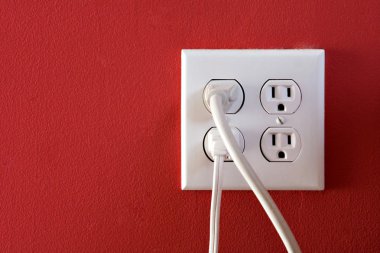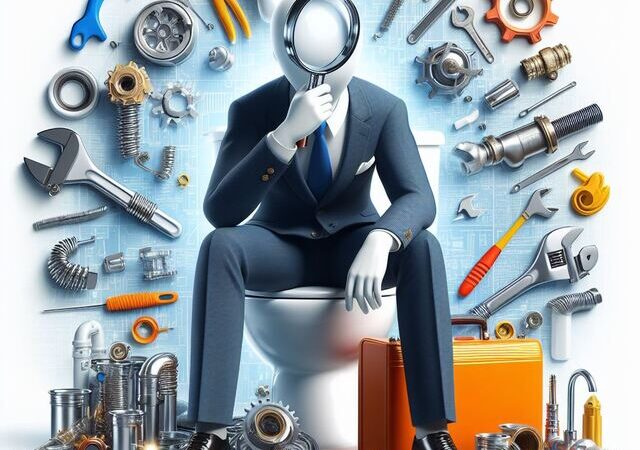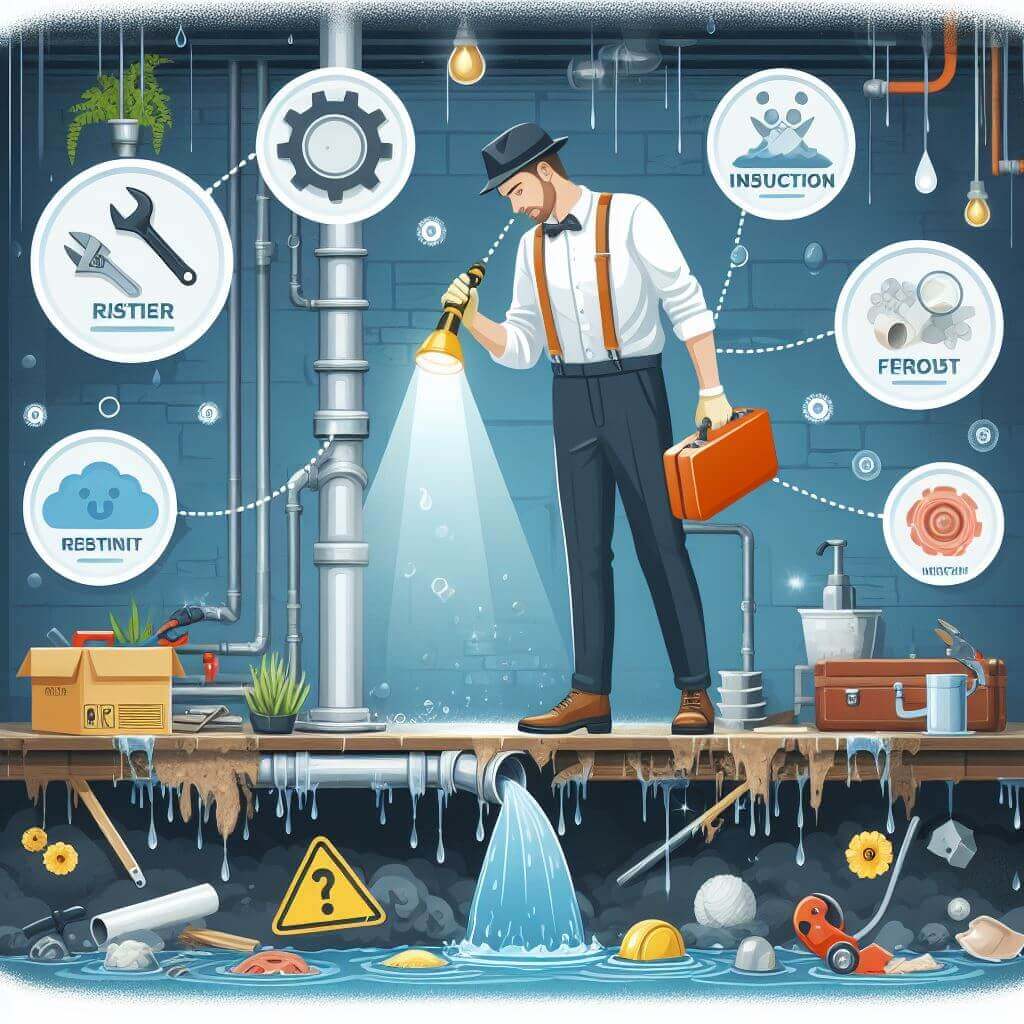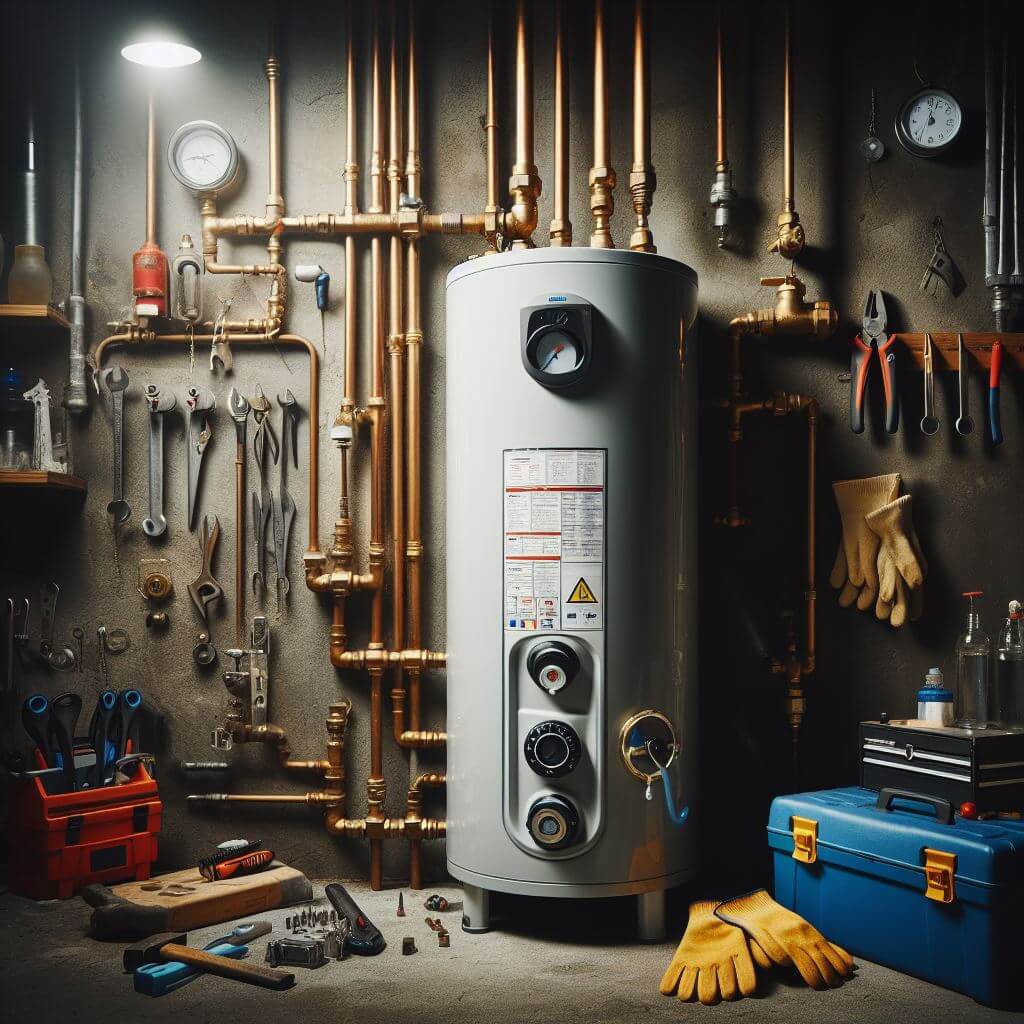The Complete Guide to Bathroom Plumbing Renovation
A bathroom renovation can be an exciting and daunting task at the same time, especially when it comes to plumbing. The bathroom is one of the most frequently used rooms in a house, and it’s essential to ensure that the plumbing is functioning correctly. A complete bathroom renovation involves not only cosmetic upgrades but also plumbing renovations to ensure that the bathroom is safe, functional, and efficient.
A bathroom plumbing renovation involves upgrading or replacing the existing plumbing fixtures, such as the sink, toilet, shower, and bathtub. It also includes updating the plumbing pipes and drainage system. The goal is to ensure that the plumbing system is up-to-date, efficient, and meets the current building codes. A complete bathroom renovation can be an excellent opportunity to upgrade to more eco-friendly and water-efficient fixtures, which can save money on water bills in the long run.
Planning Your Bathroom Plumbing Renovation
When it comes to renovating your bathroom, proper planning is essential to ensure the project runs smoothly and within budget. This section will guide you through the key considerations when planning your bathroom plumbing renovation.
Assessing Your Plumbing Needs
Before starting your bathroom plumbing renovation, it is important to assess your plumbing needs. This involves identifying any existing plumbing issues, such as leaks or clogs, and determining what changes you want to make to your plumbing system. You may want to add new fixtures, such as a bathtub or shower, or relocate existing fixtures to better suit your needs.
Design and Layout Considerations
When planning your bathroom plumbing renovation, design and layout considerations are important. You will need to determine the best layout for your bathroom, taking into account the location of existing plumbing lines and the placement of fixtures. You may also want to consider the overall style and aesthetic of your bathroom, as well as the functionality of the space.
Budgeting for Your Project
Budgeting is an important consideration when planning your bathroom plumbing renovation. The cost of the project will depend on a variety of factors, including the extent of the renovation, the materials used, and the complexity of the plumbing work. It is important to set a realistic budget for your project and to stick to it as closely as possible.
When choosing bathroom plumbing materials, it is important to consider factors such as durability, ease of maintenance, and cost. You may want to choose materials such as copper or PVC for your plumbing pipes, and fixtures such as toilets and sinks made from materials such as porcelain or stainless steel.
Overall, planning your bathroom plumbing renovation requires careful consideration of your plumbing needs, design and layout considerations, and budgeting. By taking the time to plan your project properly, you can ensure a successful and stress-free renovation that meets your needs and exceeds your expectations.
Getting Started with Bathroom Demolition
Bathroom renovation can be an exciting project, but it can also be overwhelming, especially when it comes to demolition. This section will provide a guide on how to get started with bathroom demolition, including safety measures and removing old fixtures and fittings.
Safety First: Preparing for Demolition
Before starting any demolition work, it is essential to prioritize safety. This means wearing protective gear such as gloves, goggles, and a respirator mask to avoid inhaling dust and debris. Also, ensure that the water and electricity supply to the bathroom are turned off to prevent any accidents.
It is also advisable to cover the floors and any surrounding areas with drop cloths or plastic sheets to protect them from damage. Additionally, make sure to have a first aid kit nearby in case of any injuries.
Removing Old Fixtures and Fittings
Once safety measures are in place, the next step is to remove old fixtures and fittings. This includes items such as the toilet, sink, bathtub, and shower. Start by turning off the water supply to the bathroom and then disconnecting the water lines from each fixture.
For removing the toilet, use a wrench to loosen the nuts securing it to the floor and then lift it off the bolts. For the sink, disconnect the drain and water supply lines and then remove it from the vanity. The bathtub and shower require more work, such as removing tiles and cutting through pipes, so it is advisable to hire a professional for these tasks.
After removing all the fixtures, it is essential to dispose of them properly. Check with your local municipality for guidelines on how to dispose of large items like toilets and bathtubs.
In conclusion, getting started with bathroom demolition requires prioritizing safety and taking the necessary precautions. Removing old fixtures and fittings can be a challenging task, but with the right tools and guidance, it can be done efficiently.
Water Pipes and Drainage System
Water Pipe Replacement
Replacing old water pipes during a bathroom renovation is a crucial step to ensure a long-lasting and efficient plumbing system. Before replacing any pipes, it is important to assess the condition of the existing pipes and determine the appropriate replacement material.
Copper pipes are a popular choice due to their durability and resistance to corrosion. However, they can be expensive and may require specialized tools for installation. Alternatively, PEX pipes are a more affordable option and can be easily installed using simple tools.
During the replacement process, it is important to shut off the main water supply and drain the existing pipes to avoid any potential leaks. It is also recommended to hire a professional plumber to ensure proper installation and avoid any future issues.
Installing New Drainage Lines
Installing new drainage lines is another important aspect of bathroom plumbing renovation. The drainage system should be designed to effectively remove wastewater and prevent any clogs or backups.
One common material used for drainage lines is PVC, which is durable and resistant to corrosion. The size of the pipes should be determined based on the expected water flow and the size of the bathroom fixtures.
It is important to ensure proper slope and venting of the drainage system to prevent any potential issues. Additionally, waterproofing the bathroom floor and walls can help protect the drainage system from any moisture damage.
Overall, replacing old water pipes and installing new drainage lines are important steps in a bathroom plumbing renovation. By using durable materials and ensuring proper installation, homeowners can enjoy a reliable and efficient plumbing system for years to come.
Installing Bathroom Fixtures
When it comes to renovating a bathroom, installing new fixtures can be a great way to give the space a fresh new look. From sinks and faucets to showers and toilets, there are a variety of fixtures that can be replaced or installed to create a modern and functional bathroom.
Sink and Faucet Installation
Installing a new sink and faucet can be a straightforward process, but it’s important to choose the right fixtures for your bathroom. There are a variety of options available, from pedestal sinks to undermount sinks, and single-handle to double-handle faucets.
Before beginning the installation process, it’s important to turn off the water supply and disconnect any existing plumbing. Once the old sink and faucet have been removed, the new fixtures can be installed according to the manufacturer’s instructions.
Shower and Tub Plumbing
Upgrading the shower and tub plumbing can be a more involved process, but it can also have a big impact on the functionality and style of a bathroom. There are a variety of options available, from traditional shower and tub combos to walk-in showers and freestanding tubs.
When installing new shower and tub fixtures, it’s important to consider the plumbing requirements and ensure that the fixtures are properly installed and sealed. This may require the services of a professional plumber to ensure that the job is done correctly.
Toilet Installation and Repair
Replacing or repairing a toilet can be a simple process, but it’s important to choose the right fixture for your bathroom and ensure that it is properly installed. There are a variety of options available, from traditional toilets to low-flow and dual-flush models.
Before beginning the installation or repair process, it’s important to turn off the water supply and disconnect any existing plumbing. Once the old toilet has been removed, the new fixture can be installed according to the manufacturer’s instructions.
Overall, installing new bathroom fixtures can be a great way to update and improve the functionality and style of a bathroom. By choosing the right fixtures and ensuring that they are properly installed, homeowners can create a modern and functional space that meets their needs and preferences.
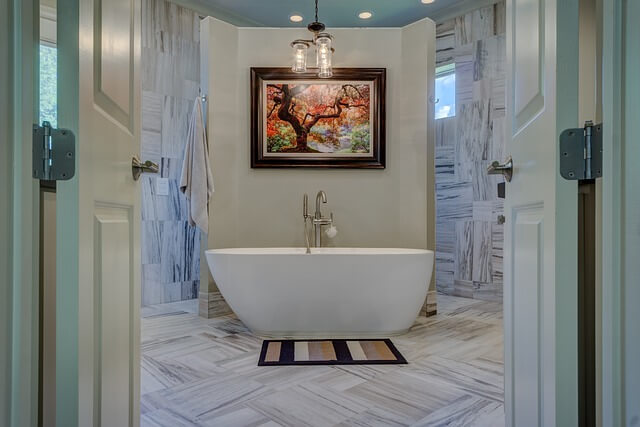
Waterproofing and Sealing
Effective Waterproofing Techniques
Waterproofing is an essential aspect of bathroom renovation, as it helps to prevent water damage and mold growth. There are several effective waterproofing techniques that can be used in bathroom plumbing renovation. One of the most popular techniques is the use of waterproofing membranes, which are applied to the walls and floors of the bathroom.
Another effective technique is the use of waterproofing coatings, which are applied to the surfaces of the bathroom fixtures and fittings. These coatings provide an additional layer of protection against water damage and help to prevent leaks.
Sealing Joints and Fixtures
Sealing joints and fixtures is another important aspect of bathroom plumbing renovation. Joints and fixtures are areas where water can seep through and cause damage, so it is important to ensure that they are properly sealed.
One effective way to seal joints and fixtures is to use silicone sealant. Silicone sealant is a flexible material that can be applied to joints and fixtures to create a waterproof barrier. It is important to ensure that the sealant is applied properly and that any gaps or holes are filled.
Another effective way to seal joints and fixtures is to use waterproof tape. Waterproof tape is a self-adhesive tape that can be applied to joints and fixtures to create a waterproof seal. It is important to ensure that the tape is applied properly and that any gaps or holes are filled.
In conclusion, effective waterproofing and sealing techniques are essential for bathroom plumbing renovation. By using these techniques, homeowners can ensure that their bathroom is protected against water damage and mold growth, and that their fixtures and fittings are properly sealed to prevent leaks.
Bathroom Ventilation and Heating
Installing Ventilation Systems
Proper ventilation is crucial for any bathroom renovation. Without it, moisture can build up, leading to mold, mildew, and other problems. Installing a ventilation system can help prevent these issues and keep your bathroom fresh and clean.
There are several types of ventilation systems available, including:
- Exhaust fans: These fans are designed to remove moisture from the air and vent it outside. They come in a variety of sizes and styles to fit any bathroom.
- Ventilation windows: These windows are designed to allow fresh air into the bathroom while also venting moisture outside.
- Ventilation grilles: These grilles are installed in the ceiling or walls and are designed to allow air to circulate while also venting moisture outside.
When choosing a ventilation system, it’s important to consider the size of your bathroom, the amount of moisture it produces, and your budget. A professional plumber can help you choose the right system for your needs and install it properly.
Heating Solutions for Bathrooms
In addition to ventilation, heating is also an important consideration for any bathroom renovation. A warm bathroom can make all the difference on a cold winter morning.
There are several heating solutions available, including:
- Radiant floor heating: This type of heating system is installed under the bathroom floor and provides a warm, comfortable surface to walk on.
- Electric heaters: These heaters are designed to be installed on the wall and can be turned on and off as needed.
- Towel warmers: These devices are designed to warm towels before use, providing a luxurious touch to any bathroom.
Again, when choosing a heating solution, it’s important to consider your budget, the size of your bathroom, and your personal preferences. A professional plumber can help you choose the right system for your needs and install it properly.
Electrical Considerations in Plumbing Renovation
When renovating a bathroom, it’s important to consider the electrical aspects of the project. Electrical safety in wet areas and integrating electrical fixtures are two key areas to focus on.
Electrical Safety in Wet Areas
Bathrooms are considered wet areas, which means that any electrical work must comply with plumbing code regulations. The National Electrical Code (NEC) requires that all electrical fixtures and wiring in wet areas be grounded and protected by a Ground Fault Circuit Interrupter (GFCI). This is to prevent electrocution in the event of water contact.
When renovating a bathroom, it’s important to ensure that all electrical work is done by a licensed electrician who is familiar with plumbing code compliance. This will ensure that the work is done safely and up to code.
Integrating Electrical Fixtures
Integrating electrical fixtures into a bathroom renovation can be a great way to add functionality and style. However, it’s important to plan the placement of these fixtures carefully to ensure that they are safe and compliant with plumbing codes.
When adding electrical fixtures to a bathroom, it’s important to consider the location of water sources and wet areas. For example, electrical outlets should be placed at least 3 feet away from any water source to prevent water from coming into contact with the outlet. Light fixtures should also be rated for use in wet areas and installed in compliance with plumbing codes.
In conclusion, electrical considerations are an important part of any bathroom plumbing renovation. By following plumbing code regulations and working with a licensed electrician, homeowners can ensure that their bathroom renovation is safe and up to code.
Eco-Friendly Plumbing Solutions
When it comes to renovating a bathroom, choosing eco-friendly plumbing solutions can not only help the environment but also save money on utility bills. Here are some sustainable options to consider:
Choosing Energy Efficient Fixtures
Replacing old fixtures with energy-efficient ones can significantly reduce water usage and save money on water bills. Low-flow toilets, showerheads, and faucets are designed to use less water without compromising performance. Dual-flush toilets are another option that allows users to choose between a low-flow flush for liquid waste and a higher-flow flush for solid waste.
When selecting fixtures, look for the WaterSense label, which means they meet the Environmental Protection Agency’s (EPA) criteria for water efficiency and performance. Additionally, choosing fixtures made from sustainable materials, such as bamboo or recycled glass, can further reduce the environmental impact.
Sustainable Plumbing Practices
In addition to choosing energy-efficient fixtures, there are several sustainable plumbing practices to consider during a bathroom renovation. One option is to install a greywater system, which collects and recycles water from sinks, showers, and baths for use in flushing toilets or irrigating plants.
Another sustainable practice is to insulate hot water pipes to reduce heat loss and save energy. Additionally, fixing leaks promptly and avoiding chemical drain cleaners can help prevent water waste and pollution.
By incorporating eco-friendly bathroom plumbing solutions, homeowners can reduce their environmental impact and save money on utility bills.
Final Touches and Finishing
After completing the plumbing renovation, it’s time to add the final touches to the bathroom. The final touches and finishing not only enhance the look of the bathroom but also ensure that everything is in place.
Applying Final Sealants and Caulks
One of the essential final touches is applying sealants and caulk to the bathroom fixtures. This step is crucial to prevent water damage and mold growth. It is recommended to use high-quality sealants and caulk for better results. The Affordable Bathroom Plumbing Update recommends using silicone-based sealants and caulk for their durability and resistance to water and mildew.
Before applying the sealants and caulk, make sure the surface is clean and dry. Use a scraper to remove any old caulk or sealant. Apply the sealant or caulk smoothly and evenly. Use a caulk smoothing tool to ensure that the caulk is evenly distributed and has a professional look.
Cosmetic Enhancements and Clean-Up
After applying the sealants and caulk, it’s time to focus on the cosmetic enhancements and clean-up. Modern Bathroom Plumbing Techniques recommend adding some accessories to the bathroom to enhance its look and functionality. Some of the accessories that can be added include towel racks, soap dispensers, and shower caddies.
Additionally, it’s important to clean up the bathroom after the renovation. Remove any debris or leftover materials, and wipe down the fixtures and surfaces. This will give the bathroom a fresh and clean look.
The final touches and finishing are crucial to completing a bathroom plumbing renovation. Applying sealants and caulk and adding cosmetic enhancements can enhance the look and functionality of the bathroom. Cleaning up the bathroom after the renovation will give it a fresh and clean look. By following these steps, the bathroom will be ready for use and will provide a comfortable and enjoyable experience for years to come.
Maintenance and Upkeep
Regular Plumbing Maintenance Tips
Proper maintenance of plumbing systems is essential to ensure their longevity and avoid costly repairs. Here are some regular plumbing maintenance tips:
- Check for leaks: Regularly inspect pipes, faucets, and valves for any signs of leaks. Even small leaks can lead to significant water wastage and damage to your property over time.
- Keep drains clear: Clogged drains can cause water to back up and damage your plumbing system. Use a drain strainer to prevent hair, soap, and other debris from entering the drain and causing clogs.
- Inspect water heater: Check the temperature and pressure relief valve on your water heater annually to ensure it is functioning correctly. Also, flush the water heater tank to remove sediment buildup that can reduce its efficiency and lifespan.
- Test toilets: Check for any leaks or running water in your toilet by adding a few drops of food coloring to the tank. If the water in the bowl changes color, it means there is a leak that needs to be fixed.
- Maintain septic system: If you have a septic system, have it inspected and pumped every three to five years to avoid backups and costly repairs.
Troubleshooting Common Issues
Despite regular maintenance, plumbing issues can still occur. Here are some common issues and troubleshooting tips:
- Low water pressure: Low water pressure can be caused by clogged pipes, a malfunctioning pressure regulator, or a leak in the system. Check for any leaks and clean or replace clogged pipes or fixtures.
- Clogged drains: Use a plunger or drain snake to clear clogs in sinks and toilets. Avoid using chemical drain cleaners as they can damage pipes and harm the environment.
- Running toilet: A running toilet can waste a significant amount of water and increase your water bill. Check the flapper valve, fill valve, and float ball to ensure they are functioning correctly.
- Hot water issues: If you are not getting hot water, check the thermostat on the water heater and make sure it is set correctly. Also, check for any leaks or sediment buildup in the tank.
By following these regular plumbing maintenance tips and troubleshooting common issues, you can ensure your plumbing system is functioning correctly and avoid costly repairs.
Professional Insights and Tips
Hiring Professional Plumbers
When it comes to bathroom plumbing renovation, it is always advisable to hire a professional plumber. A licensed plumber has the expertise and experience required to handle any plumbing issue that may arise during the renovation process. They also have the right tools and equipment to get the job done quickly and efficiently.
Before hiring a plumber, it is important to do your research. Look for plumbers who are licensed and insured. Check their references and read reviews from previous clients. It is also important to get multiple quotes to ensure you are getting a fair price.
When discussing the project with the plumber, make sure to communicate your goals and expectations clearly. This will ensure that everyone is on the same page and that the project is completed to your satisfaction.
Advanced Plumbing Techniques
If you are looking to take your bathroom plumbing renovation to the next level, there are a few advanced techniques that you may want to consider.
One such technique is the installation of a tankless water heater. Unlike traditional water heaters, tankless water heaters do not store hot water. Instead, they heat water on demand, providing hot water whenever you need it. This can save you money on your energy bills and free up space in your bathroom.
Another advanced technique is the installation of a water filtration system. A water filtration system can remove impurities from your water, providing you with clean, healthy water for bathing and brushing your teeth.
When considering advanced plumbing techniques, it is important to consult with a licensed plumber. They can help you determine which techniques are right for your bathroom renovation project.
Frequently Asked Questions
What are the initial steps to take when starting a bathroom plumbing renovation?
Before starting a bathroom plumbing renovation, it is essential to plan and prepare. The first step is to assess the current bathroom and determine what needs to be changed. This can include the layout, fixtures, and plumbing. It is also important to set a budget and timeline for the project. Once the planning is complete, the next step is to hire a licensed plumber to ensure that the plumbing work is done correctly and up to code.
How should I budget for a complete bathroom renovation?
Budgeting for a complete bathroom renovation can be challenging, but it is essential to ensure that the project stays on track financially. The first step is to determine what changes are necessary and what can be done later. It is also important to research the cost of materials and labor. A general rule of thumb is to set aside 10-15% of the total budget for unexpected expenses. It is also important to work with a reputable contractor who can provide an accurate estimate and help keep the project within budget.
What are the essential bathroom remodel products to consider?
The essential bathroom remodel products to consider include fixtures such as toilets, sinks, and showers, as well as flooring, lighting, and storage solutions. It is important to choose high-quality products that are durable and functional. It is also important to consider the style and design of the bathroom and choose products that complement the overall aesthetic.
Can you provide a step-by-step guide for remodeling a bathroom?
Remodeling a bathroom can be a complex process, but a step-by-step guide can help simplify the project. The steps include planning and preparation, demolition, plumbing and electrical work, installation of fixtures and finishes, and final touches. It is important to work with a licensed plumber and electrician to ensure that the plumbing and electrical work is done correctly and up to code.
What are some effective tips for remodeling a small bathroom space?
Remodeling a small bathroom space can be challenging, but there are several effective tips to make the most of the space. This includes choosing light colors for the walls and flooring to make the space appear larger, using mirrors to reflect light and create the illusion of more space, and choosing compact fixtures and storage solutions that maximize space.
In what order should I proceed with a bathroom remodel, particularly concerning the flooring?
When proceeding with a bathroom remodel, it is important to follow a specific order to ensure that the project is completed efficiently and effectively. The first step is to remove the old flooring and prepare the subfloor. Next, the plumbing and electrical work should be completed. After that, the new flooring can be installed, followed by the installation of fixtures and finishes. Finally, the bathroom can be painted and decorated to complete the project.

